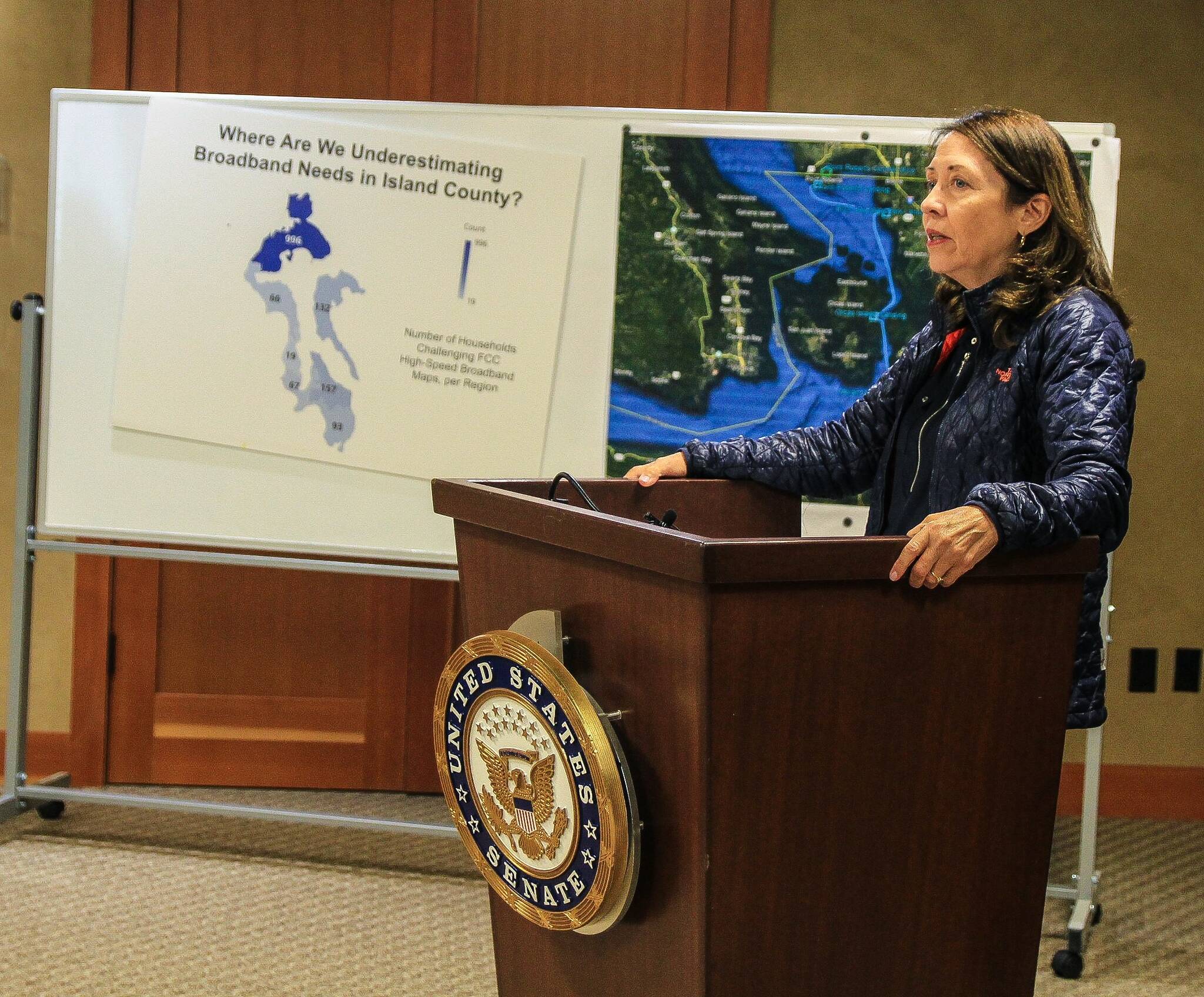U.S. Sen. Maria Cantwell paid a visit to Whidbey Telecom over the weekend to promote a $11.8 federal investment that will improve broadband access to about 70,000 residents of the island.
Cantwell spoke to company officials alongside giant orange conduit spools at the construction staging area on South Whidbey before meeting with local leaders at the Whidbey Telecom headquarters.
The grant will help the telecom company complete the Point Roberts Middle Mile Infrastructure project and bring better internet connection to Whidbey Island Naval Air Station and underserved areas by funding the construction of 47.6 miles of terrestrial underground fiber and 63.1 miles of undersea fiber.
The grant comes from the National Telecommunications and Information Administration’s — also known as NTIA — Middle Mile Broadband Infrastructure Program, for which Cantwell helped secure $1 billion in the Bipartisan Infrastructure Law.
In addition to the base, the grant will serve areas of poor service on Whidbey, Point Roberts, Lummi Nation and surrounding areas. In all, it will bring internet access to 100,000 people.
The new and improved infrastructure will carry data over long distances, connecting local networks with network service providers and the global internet. In case of a natural disaster, cyber attack or other crises, residents would still be able to communicate via the internet.
State Rep. Dave Paul said broadband is one of the top infrastructure issues in his district, with places that appear to have better connectivity than they actually do and places that have no internet access at all.
In an interview, Cantwell said the need for better connectivity became particularly obvious with the pandemic.
“When COVID happened, everybody realized what a crisis it really was,” she said.
People had to attend school, work and see their doctors online from their homes, with the struggle of dealing with poor service. Despite the return to in-person gatherings, connectivity issues keep limiting residents in underserved areas.
The issue, Paul said, has been affecting the district’s economic development as some areas are unfit for small businesses, which might be unable to make point-of-sale transactions due to poor connectivity. Furthermore, getting access to Comcast can be very expensive.
Ebey’s Landing National Historical Reserve has been particularly affected by the problem. Reserve Manager Marie Shimada said the office — which is located near Sunnyside Cemetery in rural Coupeville — is so poorly connected that employees have been forced to work from home some days of the week to do simple tasks like loading websites, sending files and videocalling.
Cantwell believes better broadband accessibility will encourage more businesses to start on the island.
“Whidbey has always been a great place to live,” Cantwell said. “Now, people can also think about other businesses that they might be able to do there.”
Thomas Waltor, senior project manager, said the project might take three to five years to complete. Work will also include archaeological and environmental studies to ensure the cables won’t damage the environment.
During the meeting, Cantwell said it wasn’t easy to include access to high-speed internet in the Bipartisan Infrastructure Law, as some argued in favor of funding existing programs related to roads and bridges.
According to Cantwell, the Middle Mile Broadband Infrastructure Program is highly competitive as the program has received seven times the amount of applications it can satisfy.
“That’s another way to say we’re darn lucky that we got some of the money,” she said.
Cantwell also said she would request more support from the national Telecommunications and Information Administration and Congress.
“I need Whidbey to tell the story nationally so that we can say why this is so successful,” she said.



